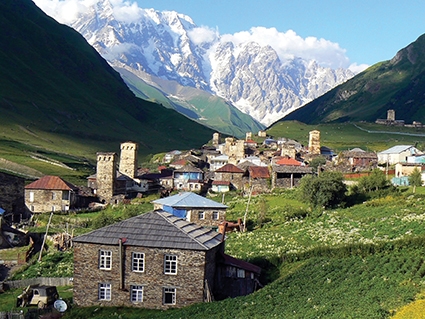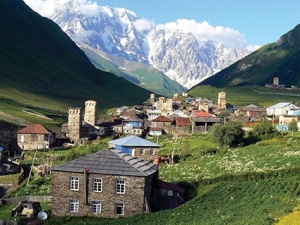Challenges for Sustainable Mountain Tourism in Georgia: Reflection on 2017 Issues
Op-Ed
December is a good time to reflect on the past year, and to look at the opportunities ahead. Since I have been working on sustainable tourism development in Georgia, I will reflect on the key challenges for mountain tourism in Georgia at the end of 2017. By sustainable tourism, I mean tourism that benefits the local people and helps protect their nature and culture.
I first came to Georgia on my own to travel around for two weeks in 2001, and have been a dozen times since. I have been working on rural development and tourism for international organizations since 2007 (on and off, but solidly for the last 2.5 years), and am finalizing a postgraduate degree in Responsible Tourism Management, focusing my research on Georgia. Responsible tourism looks at minimizing the negative and maximizing the positive impacts to create better places to live in and better places to visit.
Rapid growth in Protected Areas
Tourism in Georgia has been growing rapidly over the last five years (from 2.8m international arrivals in 2011 to nearly 7m in 2017), and mountain tourism in particular. The statistics of the Agency of Protected Areas confirm that “nature” is the leading motive for international tourists to visit Georgia. In 2016, there were 734.874 visitors to 18 Protected Areas in Georgia (41% more than in 2015), rising to 924.426 in the first 10 months of 2017.
This type of tourism is particularly important for the local communities as it can bring much-needed income in remote areas. In June 2016, I conducted the first ever community consultation for a tourism project in Svaneti, holding several meetings with the residents and local organizations of 10 villages. They all told me they wanted tourists, and more tourists. However, most of them were unprepared to host and the necessary infrastructure and facilities was lacking. But the crucial thing is that “more tourists” can potentially have a negative impact if the growth is not managed responsibly; if there is no vision what a particular destination wants to achieve and how tourists can benefit the destination and its people, rather than destroying its main assets.
This is a subject for a separate article and I will write about it shortly, but I mentioned it here because that lack of long-term management of tourism is one of the key issues likely to hinder sustainable tourism development in the mountains and Protected Areas of Georgia.
Key challenges for mountain tourism in Georgia
1. Ad-hoc, unplanned tourism development with no vision or long-term strategy. No efficient Destination Management Organizations (regional tourism bodies) to oversee the strategic development.
2. Lack of cooperation and communication between the private and public sector on planning and implementation of tourism in the regions.
3. Lack of professional hospitality, management and language skills amongst the local population.
4. Seasonality and short stay of tourists.
5. Poor quality of products and services.
6. Poor and non-diversified product offer.
7. Lack of strategic and coordinated marketing.
8. Poor trail management (marking, maintenance; inability to utilize the existing network of trails for tourism development).
9. Poor waste management – no waste collections in villages; rubbish is thrown into rivers.
10. Poor infrastructure (particularly, access roads to mountainous villages).
Opportunities
But it’s not all doom and gloom. The main strength and opportunity lies in Georgia’s rich and diverse natural resources and culture, as well as its potential for adventure tourism, remains in its unspoiled, “authentic” environment. This is what draws most international tourists here. Protecting and preserving that heritage, and diversifying the experiences offered, are the key opportunities for successful and sustainable growth. It is up to the local residents, as well as authorities, to ensure this is done. Money (i.e. income from tourists) will drain if Georgia loses its main assets; tourists will simply go elsewhere.
DMOs for efficient management
There is a huge need to establish Destination Management Organizations (DMOs) in each region for an efficient sustainable tourism management, and for addressing and making any progress on the key environmental, economic, social, and cultural issues. DMOs are organizations, groups or committees from both public and private sector responsible for a coordinated approach to and management of sustainable tourism (planning, oversight and implementation).
I am currently working on setting up two DMOs and I believe that regional DMOs - provided the roles and responsibilities of individual members are clearly defined, and that it is appropriately funded – would provide the much-needed leadership and vision for long-term sustainable tourism development.
Marta Mills (oneplanetblog.com) is a Sustainable Tourism Specialist for the Caucasus region, advising international organizations and tourism businesses on how to manage tourism responsibly to protects its natural and cultural assets, and benefit the local population in Georgia and Armenia. She studies for MSc in Responsible Tourism Management, focusing all her research on Georgia.
Marta Mills











